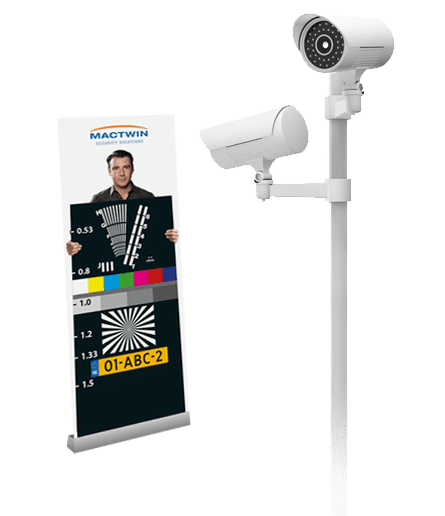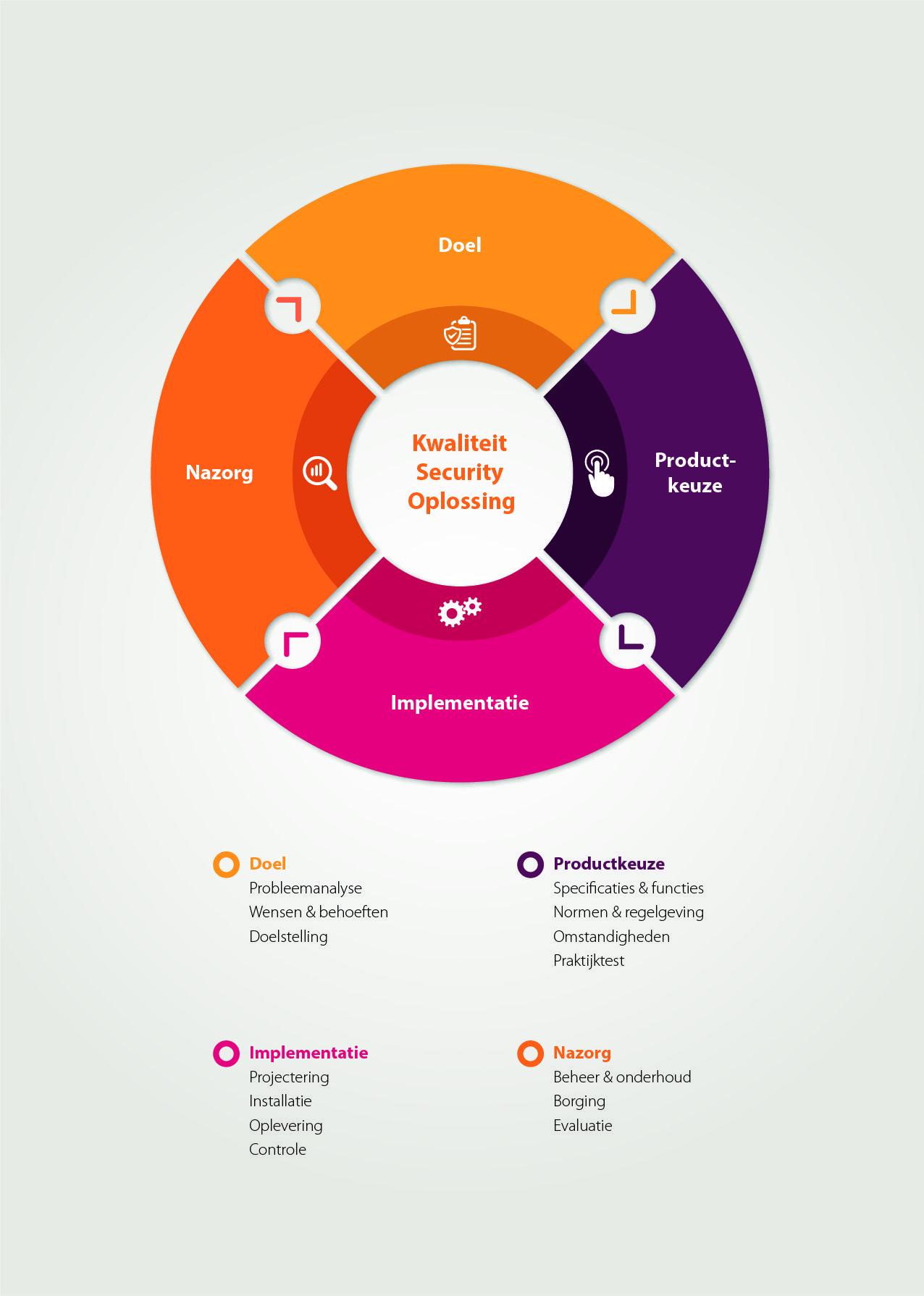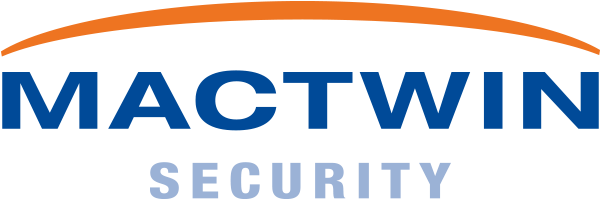Voor kwalitatief hoogstaande beveiligingsoplossingen kiest u voor gerenommeerde systemen en een goed aangeschreven system integrator. Maar wat bepaalt nu die kwaliteit? Aan de hand van de technische specificaties kan een eerste oordeel worden geveld over de kwaliteit van een oplossing. Kwaliteit is echter een subjectief begrip en hangt af van meer factoren, zoals de gestelde eisen. Die kunnen in normen zijn vastgelegd, maar ook kan er sprake zijn van aanvullende situatie- of locatieafhankelijke eisen.
We spreken met Michiel de Graaf, Business Development Manager bij Mactwin, over het aantoonbaar leveren van kwaliteit. “Als het gaat over de kwaliteit van beveiligingsoplossingen, dan is het beoordelen van technische specificaties alleen onvoldoende”, aldus De Graaf.
Het begint bij de uitgangspunten
“Neem cameratoezicht en in het bijzonder de kwaliteit van de beelden. In de media horen we regelmatig kritische geluiden over de kwaliteit en bruikbaarheid van camerabeelden na een delict. Of dat terecht is, weten we niet en kunnen we pas beoordelen als we de uitgangspunten [zie hieronder, red.] kennen.”
Voorbeelden uitgangspunten camerasysteem:
- Wat is het doel van het camerasysteem? Gaat het om (forensische)identificatie, herkenning, observatie of detectie?
- Met welke specifieke omstandigheden moet rekening worden gehouden? Denk aan (tegen)licht, weersomstandigheden en dag- of nachtsituaties.
- Wat zijn de functionele eisen en wensen? Type behuizing, het wel of niet kunnen besturen van de camera’s, beeldopslag, infraroodverlichting, beeldresolutie, type lens, etc.
“Of camera’s de vereiste functies hebben en geschikt zijn voor de specifieke omstandigheden, is vaak snel te beoordelen aan de hand van de technische specificaties”, vertelt Michiel de Graaf. “Maar dat wil nog niet automatisch zeggen dat de camera’s goede of bruikbare beelden leveren. Pas als de beeldkwaliteit voldoende is om het vooraf vastgestelde doel – bijvoorbeeld personen identificeren of een overzichtsbeeld geven – te realiseren, kun je spreken van een goed beeld.”
Normeringen en de praktijk
De NEN-50132 beschrijft de 4 mogelijke doelstellingen voor cameratoezicht en geeft per doelstelling een richtlijn met betrekking tot de mate waarin gezichten herkenbaar moeten zijn. Hierbij speelt de beeldresolutie een belangrijke rol. De Graaf: “Maar ook lichtomstandigheden en de positionering van de camera hebben invloed op de mogelijkheid om personen herkenbaar in beeld te brengen. Mactwin gebruikt, om de beeldkwaliteit in relatie tot de doelstelling goed te kunnen beoordelen, onder andere een eigen versie van Rotakin (zie volgende pagina). Verder besteden we veel aandacht aan het configureren en testen van het camerasysteem. Dat laatste zo nodig in een dag- en in een nachtsituatie. En door het camerasysteem (op afstand) technisch te monitoren, weten wij en onze klanten op ieder moment of het systeem nog altijd goede camerabeelden levert.”
Over wat een goede beeldkwaliteit is, lopen de meningen uiteen. De Graaf: “Het klinkt misschien gek, maar een verdraaid of licht verkleurd camerabeeld kan prima zijn als het maar voldoet aan de vooraf geformuleerde doelstelling.” Ook voor inbraak- en brandmeldinstallaties zijn normen en richtlijnen vastgesteld. “Maar ook hier geldt dat het voldoen aan de normen geen garantie is voor een goed functionerend systeem”, aldus de Graaf. “Normen en richtlijnen bieden houvast voor eisende partijen zoals verzekeraars. Maar is dat voldoende? Het is belangrijk om altijd, om wat voor een systeem het ook gaat, de doelstellingen van het systeem helder te hebben, de geldende normen en verzekeringseisen te kennen en de specifieke wensen en omstandigheden mee te laten wegen. Bij hoog risico objecten zijn soms meer maatregelen nodig dan de norm voorschrijft, zoals extra vertragende (bouwkundige) maatregelen. Wil je zeker weten dat een safety of security systeem voldoet aan de geldende eisen, dan is een praktijktest noodzakelijk.”
Zelf ontwikkelde kwaliteitshulpmiddelen
“Bij Mactwin zijn we steeds op zoek naar manieren om de kwaliteit van onze activiteiten te verhogen. In het kader van BIESS (Best practice for Implementing Effective Security Solutions) hebben we bijvoorbeeld allerlei instrumenten ontwikkeld om de kwaliteit van de gekozen en geïmplementeerde beveiligingsoplossing te kunnen borgen. Deze instrumenten zijn gebaseerd op onze jarenlange ervaring met beveiligingsprojecten in allerlei branches. We hebben successen en fouten geanalyseerd en de kritische succesfactoren vastgesteld. En dat hebben we niet alleen vertaald naar praktische documenten, sjablonen en whitepapers, maar ook naar doeltreffende oplossingen en een gestructureerde en gestandaardiseerde aanpak.
Een goed voorbeeld vind ik onze Octagon Security Methodiek. Dat is een instrument om een gebouw in te delen in securitygebieden op basis van de aanwezige waardevolle goederen, informatie of processen. Per gebiedsovergang (bijvoorbeeld van ‘openbaar’ naar ‘secure’) kunnen vervolgens beveiligingsmaatregelen worden vastgesteld. De Octagon Security Methodiek resulteert in samenhangende en gebalanceerde maatregelen waardoor organisaties op security gebied in control zijn en blijven. Binnen Octagon hebben we daarbij best practices ontwikkeld voor verschillende typen gebouwen.”
Met een Rotakin kan volgens de normering visueel beoordeeld worden of de camerabeelden geschikt zijn voor identificatie- of herkenningsdoeleinden. Op de foto ziet u een gemodificeerde “Rotakin” die door Mactwin gebruikt wordt om camera’s in te regelen.

Testen en onderhouden
“Tot slot,” zegt De Graaf, “vinden we het belangrijk om de producten die we voeren zo veel mogelijk te testen. In huis of op locatie met bijvoorbeeld een camera shoot-out. Kwaliteitsbewaking houdt overigens niet op na de oplevering. Om te zorgen dat beveiligingssystemen over langere periode gegarandeerd goed functioneren, is onderhoud gewenst, maar bijvoorbeeld ook controle op de beeldkwaliteit. Dat kan bijvoorbeeld met een periodieke remote health check, het verzorgen van back-ups en software updates en door continue bewaking op technische storingen. Op deze manier signaleren wij storingen preventief; zodra het systeem dreigt vast te lopen. We kunnen dan snel en vaak op afstand een dreigende storing afwenden, waardoor de processen bij onze klanten ongehinderd door kunnen gaan en de beveiliging op het gewenste niveau blijft.”

